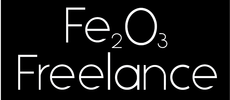|
In September, YouTube embraced a more transparent de-monetization system. Though the policy has been in place since 2012, content creators only began receiving de-monetization notifications this year. Cue vlogger panic. Revenue loss wasn’t the only concern; cries of censorship could be heard from beauty vloggers and current event channels alike. Many YouTubers were frustrated by the broadness of the demonetization policy, which seemed to be designed to demonetize “all but the most bland of YouTube videos.” It even sparked a trending hashtag, which is how you know an issue is important. For those of you who aren’t familiar with the way Youtube’s monetization works, here’s a simplified overview: YouTube uses an algorithm to examine content and if it determines that your content isn’t “advertiser-friendly,” ads won’t show on those videos and creators don’t earn money on those videos. YouTube’s current “Advertiser-friendly” de-monetization policy isn’t, however, 100% advertiser friendly. Anything that the algorithm determines an advertiser *might* not want to be associated with is immediately taken out of the advertising pool. This robs advertisers of valuable targeting opportunities, especially for brands that want to target an edgy or extreme audience. If YouTube wants to cultivate the strongest relationship possible with the advertisers that support the platform, it should reconsider the current model of monetization. Successful media placement depends on a match between the ad, the context of the ad placement, and the target market who’s going to consume the media. In order to achieve optimal placement, YouTube should consider repurposing their current algorithm to sort content by type and allow advertisers and brands to opt-in to advertise on content that other brands might find questionable. Imagine the possibilities: a horror movie advertisement could roll just before a “Let’s Play” video of a spooky but violent videogame, while Huggie’s could stick to more family friendly content. A new system of ad placement could benefit YouTube, its content creators, and advertisers. Do you agree? Disagree? Let me know what you think in the comment section!
0 Comments
Leave a Reply. |
Author
Mallie Rust is a TexasMedia Student with a passion for emerging media vehicles and ad technologies. She's also a passionate defender of the Oxford comma. Archives
March 2017
Categories |
© COPYRIGHT 2015. ALL RIGHTS RESERVED.




 RSS Feed
RSS Feed